SciTech Tuesday: The Battle of the Atlantic
Seventy five years ago, although the U.S. was not officially engaged in the war, ships under the flag and carrying U.S. goods and passengers were being attacked by German U-boats.
In June 1941 the SS Robin Moor, though carrying no military supplies or personnel, was sunk by U-69 off the coast of Sierra Leone after passengers and crew were given a short time to evacuate on life boats. The U-Boat 552 sank the U.S. naval destroyer USS Reuben James on 31 of October 1941, off the coast of Iceland.
The Battle of the Atlantic began in 1939 when Germany began a blockade of England. The balance of power and nature of the battle changed over the years. With the loss of the French Navy and the occupation of Norway in 1940, England lost an ally and the Germans were able to add to the numbers of U-boats in the Atlantic, and to use French bases to launch ships.
Germany had the upper hand in the long-running battle from June 1940 until early 1941. The British Navy responded by moving to larger and less frequent convoys, and the U.S. added some escorts to defense of cargo ships. England also shared its developments in ASDIC (later called SONAR) and depth charges with the U.S., but there were great limitations to the early technology. The depth charges went only to half the depth the U-boats could dive, and ASDIC could not be used in close proximity to submarines, or at all on surface vessels. In early 1941 the British changed coordination of convoy escorts, and their casualty rate declined. Radar sets that tracked broadcasting submarines further aided the Royal Navy in locating U-boats. In response, Admiral Donitz, who commanded the German U-boat fleet, moved his ‘wolf-packs’ hunting convoys farther west into the Atlantic, in a gap in air support that left the convoys particularly vulnerable.
When, in the middle of 1941, British codebreakers began to reliably translate Enigma codes, the battle swung in the advantage of the Allies, but this reprieve was brief. German production of U-boats overwhelmed that advantage in late 1941 and convoy casualties again began to rise.
When the U.S. entered the war at the end of 1941, Donitz directly targeted the ports of the eastern seaboard. In early 1942 U-boats patrolled the coast of the U.S. and sank over a million tons of cargo without losing a single submarine. As the U.S. began escorting convoys, they pushed the U-boats back into the mid-Atlantic. Convoy losses were large, but not critical at this time.
Through 1942 and 1943 technological advances by the Allies shifted the balance of naval power. The Allies began to use ‘hedgehogs,’ contact-fuzed bombs, and Leigh lights. U-boats ran on batteries will below and surfaced to recharge batteries, replenish air, and attack. They could move much more quickly on the surface than below. The early RADAR systems could not detect at short range, and so the Leigh lights allowed aircraft to spot surfaced U-boats.
Allied losses rose again in the Spring of 1943, as the number of U-boats peaked and the Germans improved the Enigma key, making their code unreadable for a period of a couple of weeks. But further technological advances on the part of the Allies finally decided the Battle of the Atlantic over the Summer of 1943.
There were finally long-range aircraft in place that could hunt and destroy U-boats. Anti-ship modified B-24s based in Newfoundland supported convoys in the mid-Atlantic. Additionally, centimeter-band RADAR technology was deployed on aircraft and ships. This more sophisticated RADAR allowed location of U-boats by ships and planes, and was undetectable by German technology.
The Allies pressed their new advantage, and focused resources on the Bay of Biscay, where the Germans based most of their U-boats. This finally reduced the efficacy of the German U-boat fleet.
Without victory on the Atlantic, it is doubtful the Allies would have been able to move the troops and supplies into position for the invasion of Normandy. In fact, in Spring 1943 there was serious doubt whether England had enough food and supplies to survive even without sending material overseas. Innovation in technology and its deployment won the Battle of the Atlantic.
- A US patrol boat dropping a depth charge.
- A U-boat as it is hit by a torpedo.
- German sailors on a wounded and sinking U-boat
Posted by Rob Wallace, STEM Education Coordinator at The National WWII Museum.
all images from the collection of the National WWII Museum.



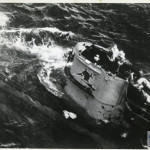
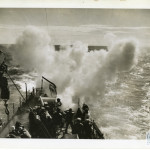
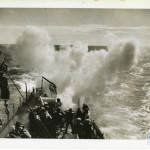
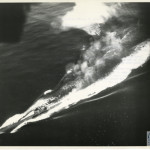
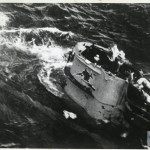


Leave a Reply